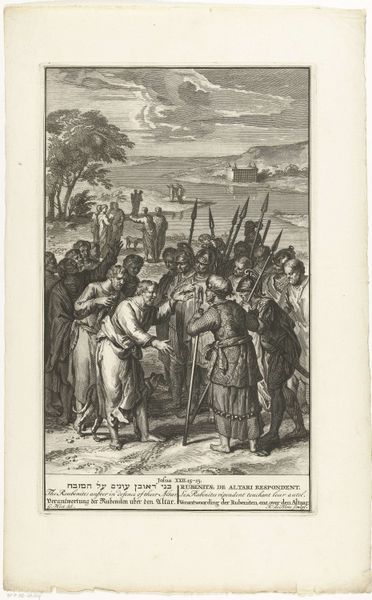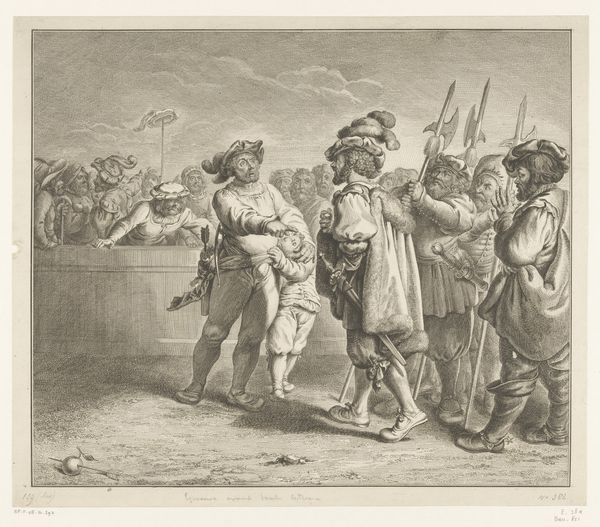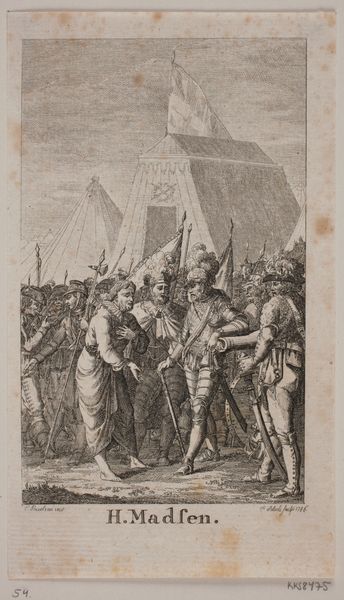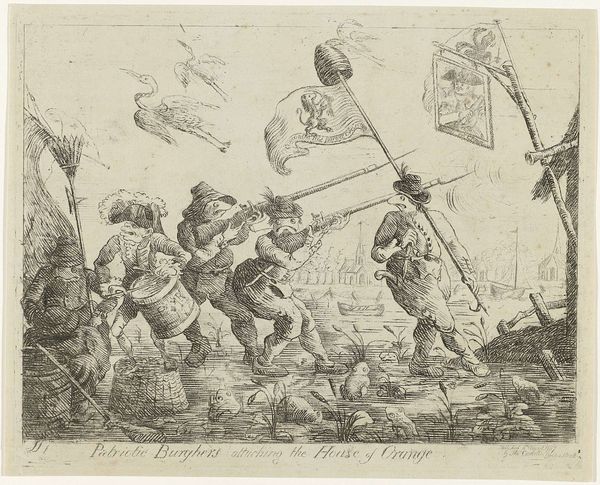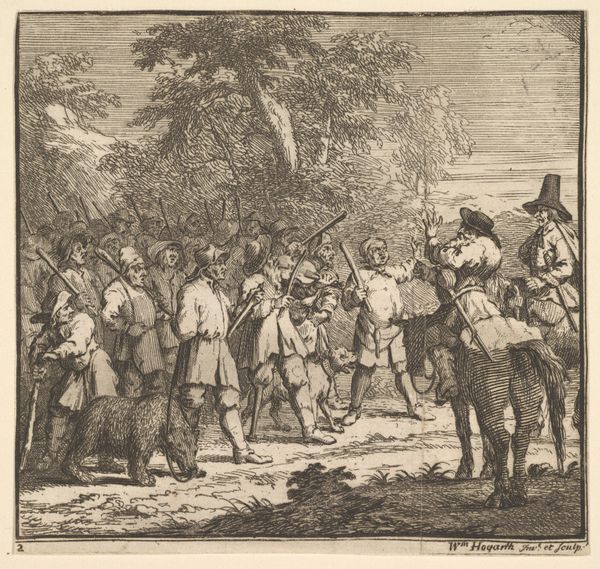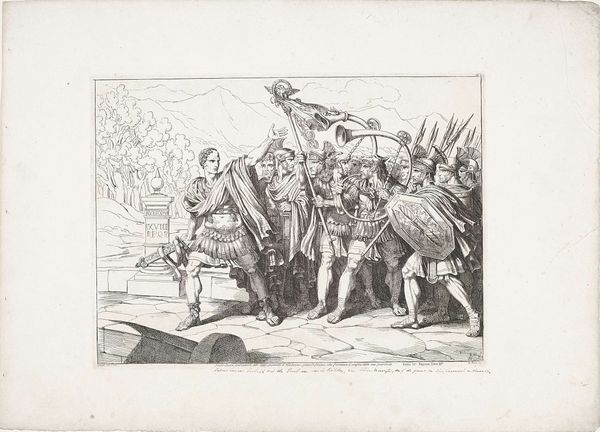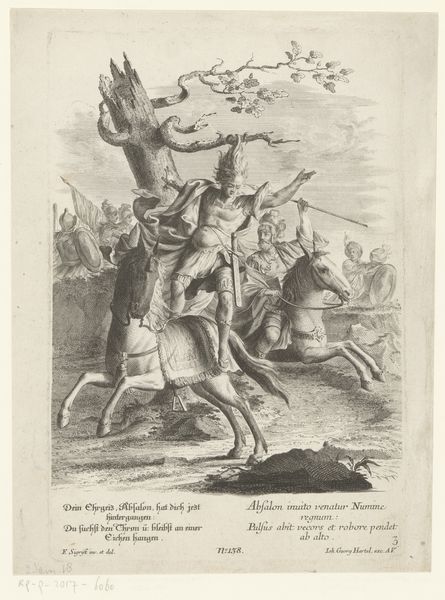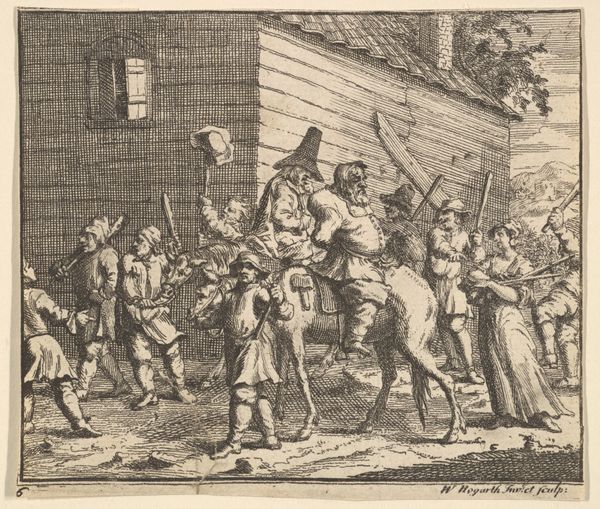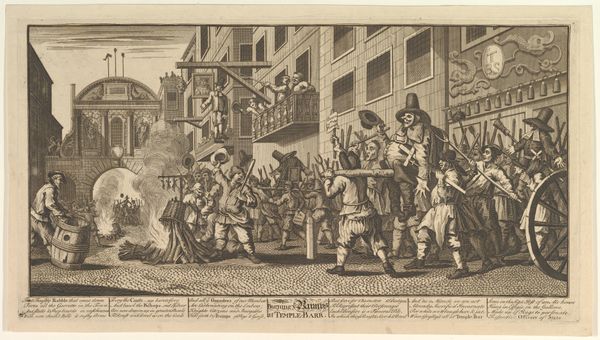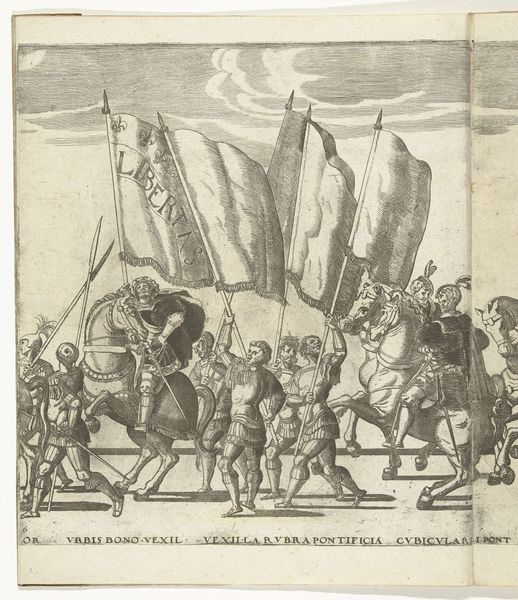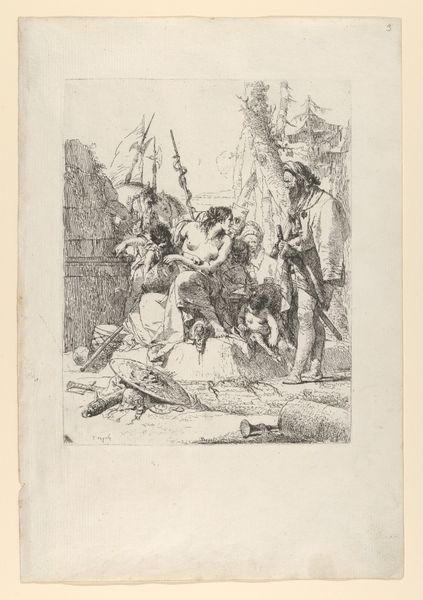
drawing, ink
#
drawing
#
baroque
#
ink
#
genre-painting
#
history-painting
Dimensions: height 355 mm, width 302 mm
Copyright: Rijks Museum: Open Domain
Egbert van Heemskerck the Younger created this ink drawing of a ‘Dierensatire’, or animal satire, sometime in the late 17th or early 18th century. Heemskerck was known for his satirical genre scenes, and here he uses anthropomorphic animals to mock human society. We see a procession of animals dressed in human clothing, mimicking the pomp and ceremony of military or civic life. The choice of animals, like the pig and the ox, likely represent different human vices or social classes. This kind of imagery was popular in the Dutch Golden Age, when artists often used satire to comment on the social and political issues of their time. By using animal figures, Heemskerck could critique the social structures of Dutch society while avoiding direct censorship. The drawing is a window into the values, anxieties, and political debates circulating in the Netherlands. To understand this work fully, one might consult period sources like emblem books, popular literature, and political pamphlets, to discover the meanings attached to different animals and symbols.
Comments
No comments
Be the first to comment and join the conversation on the ultimate creative platform.
